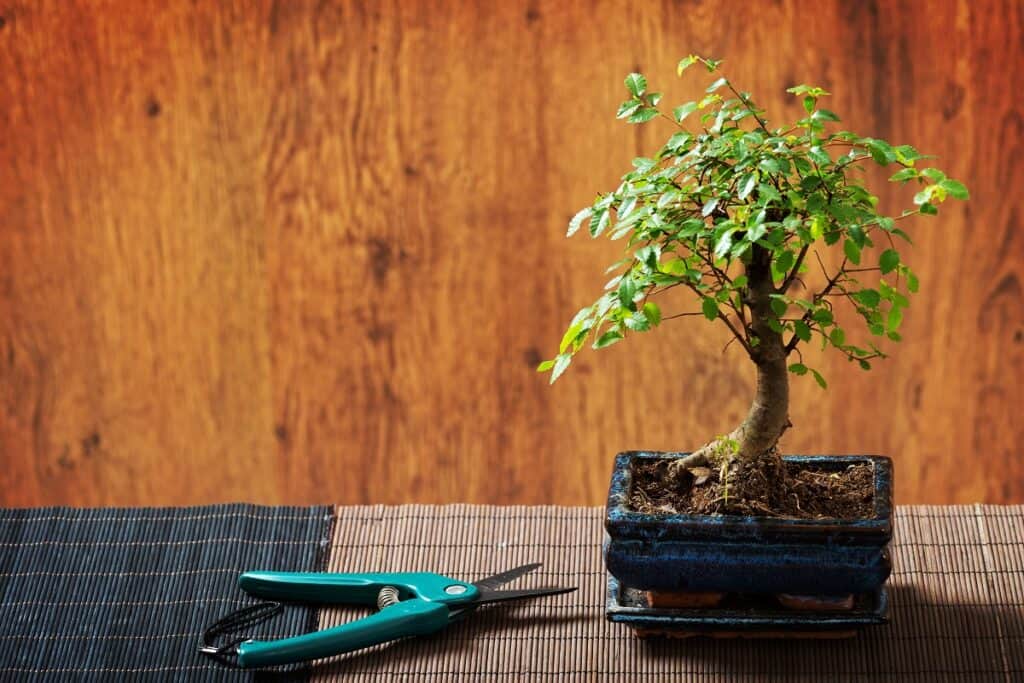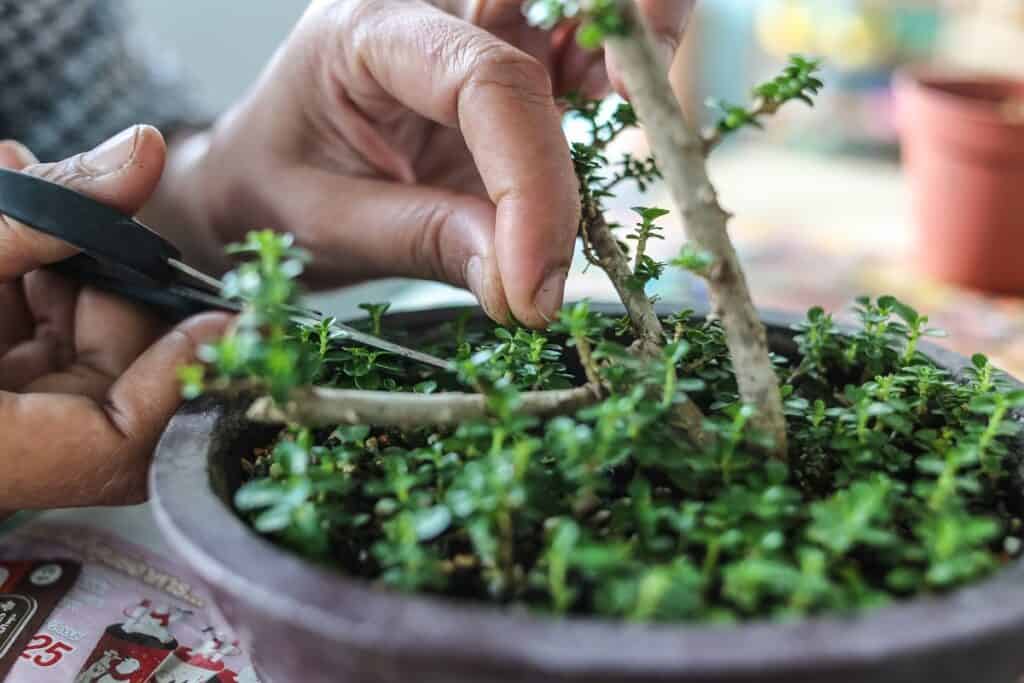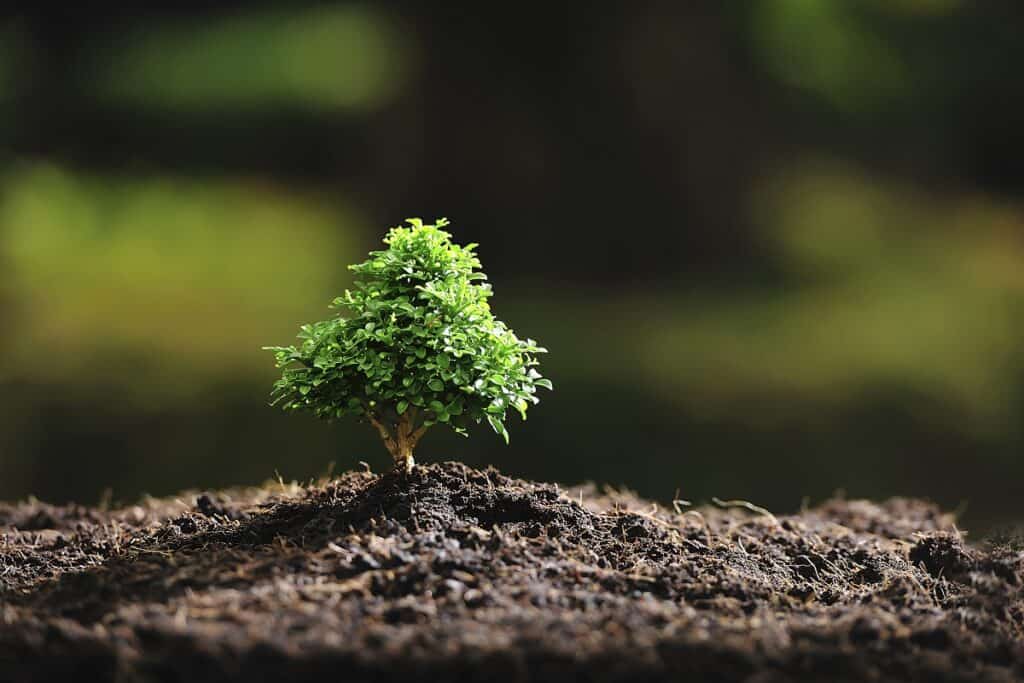The best way to get started with bonsai is to grow it from seeds. Growing bonsai from seeds is a bit more challenging than growing it from cuttings, but it’s also more rewarding. In this article, I’ll show you how to grow bonsai from seeds and give you some tips and tricks to make it easier.

Bonsai is an ancient art form that has been practiced in Japan and China for centuries. It involves creating miniaturized versions of trees and plants that can be enjoyed indoors or outdoors.
If you’re looking for a unique and rewarding hobby, then growing bonsai is a perfect choice. Not only is it relaxing and enjoyable, but it’s also an art form that you can take pride in.
Contents
Can Any Seed Be A Bonsai?
Bonsai enthusiasts know that the key to growing beautiful bonsai trees is selecting the right seeds. While any seed can technically be used to grow a bonsai tree, not all seeds will be successful.
For the best results, bonsai enthusiasts should look for seeds that are specifically labeled as “bonsai seeds”. These seeds are usually smaller than regular seeds, and they are designed to be easier to manage.
How To Grow Bonsai From Seeds
1. Obtaining Bonsai Seeds
When it comes to how to grow bonsai from seeds, the first step is to obtain the bonsai seeds. Bonsai seeds are available in many different varieties, so it’s important to do your research and find the right type for your needs.
You can purchase bonsai seeds online or from a local nursery. Be sure to read the package carefully, as some bonsai seeds are only suitable for specific climates.
2. Preparing And Choosing The Best Soil
After obtaining your bonsai seeds, the next step is preparing and choosing the best soil for your bonsai. The type of soil you use will impact the success of your bonsai trees, and it’s important to choose a medium that is light, well-draining, and nutrient-rich.
Bonsai soil should be made up of a combination of organic matter and minerals. Organic matter, such as compost, manure, and peat moss, helps improve aeration and drainage, while minerals, such as sand, perlite, and lava rock, help provide essential nutrients to the plants.
When purchasing soil, make sure to look for a bonsai-specific soil mix. These mixes are designed specifically for bonsai, and they will provide the right balance of nutrients and drainage for your plants.
It’s also important to pay attention to the pH level of the soil. Bonsai prefer soil that is slightly acidic, so make sure to check the label before purchasing.
Finally, make sure to sterilize the soil before use. This will help prevent any unwanted pests or diseases from invading your bonsai.
By taking the time to properly prepare and choose the best soil for your bonsai, you’ll be sure to have a healthy and thriving plant.
3. Stratification And Scarification Of Bonsai Seeds
For those looking to grow bonsai from seeds, stratification and scarification of the seeds is an important step. Stratification is the process of exposing the seeds to cold and moist conditions in order to break down the hard outer shell and hasten germination. Scarification is the process of breaking or scratching the seed coat in order to speed germination.
Stratification and scarification can be done in a variety of ways. Some prefer to soak the seeds in water overnight and then store them in a refrigerator for several weeks. Others prefer to place the seeds in a damp paper towel and then store them in a cool, dark place until they germinate. Still, others prefer to scratch the seed coat with a file or knife before soaking it in water to speed up the germination process.
Whatever method you choose, it’s important to remember that stratification and scarification are essential steps in growing bonsai from seeds. They help to ensure that the seeds will germinate properly and give you the best chance of success. With a little bit of patience and TLC, you’ll be rewarded with a beautiful bonsai in no time.
4. Planting Your Bonsai Seeds
Once you have prepared the seeds and the soil, it’s time to get planting. Bonsai seeds are typically planted in a small pot filled with soil. Gently press the seeds into the soil, making sure not to cover them too deeply. You should also mist the soil lightly with water, as this will help the seeds germinate.
Place the tray or pots in a propagator or cover them with a plastic bag to keep in moisture.
Keep the soil moist but not saturated, and be sure to place your pot in a bright spot. Bonsai seeds need a good amount of light to germinate and grow, so don’t skimp on the sunshine.
Once the seedlings begin to sprout, you can begin the process of training them into bonsai. This will require some patience and dedication, but the rewards of growing your own bonsai are worth it.
5. Caring For Germinated Bonsai Seeds

When the seedlings begin to sprout, be sure to move them to a location with indirect sunlight. Too much direct sunlight can damage the delicate seedlings, so it’s important to find a spot with bright, indirect light.
As the seedlings grow, you’ll need to pay close attention to their watering needs. Water the seedlings when the top inch or two of soil is dry, and avoid overwatering.
In addition to regular watering, you’ll need to fertilize your seedlings to keep them healthy. Use a balanced, water-soluble fertilizer, and fertilize once a month during the growing season.
As the seedlings grow, prune them regularly to encourage the development of branches and leaves. When the seedlings are large enough, you can choose your favorite and start training it into the desired bonsai shape.
By providing your seedlings with the right environment and care, you’ll be well on your way to growing your own beautiful bonsai trees.
Are Bonsai Seeds Easy To Grow?
Growing bonsai trees from seeds can be a rewarding but challenging process. It can take several years for bonsai seeds to mature into fully-grown trees, and there is a high failure rate due to the delicate nature of the seeds and the specific growing conditions that they require. However, with proper care and attention, it is possible to successfully grow bonsai trees from seeds.
To increase your chances of success, it’s important to use fresh, high-quality seeds and to provide the seedlings with the right soil mixture, lighting, and watering. It’s also important to transplant the seedlings into individual pots as they grow and to trim them regularly to maintain their shape.
If you are new to growing bonsai trees from seeds, it may be helpful to start with a species of tree that is known to be easier to grow, such as a juniper or a ficus. It may also be helpful to seek guidance from a bonsai expert or to follow a detailed guide or tutorial on the subject.
How Long Does It Take To Grow A Bonsai Tree From Seed?
It can take several years for a bonsai tree to grow from seed to maturity. The exact time frame will depend on a number of factors, including the type of tree, the quality of the seeds, the growing conditions, and the amount of care and attention that the tree receives.
For some species of trees, it may take several years for the seedlings to reach a size where they can be trained into the desired bonsai shape. For other species, it may take even longer for the trees to mature and develop the characteristic small leaves and gnarled branches that are characteristic of bonsai trees.
It’s important to remember that patience is key when growing a bonsai tree from seed. Don’t expect your bonsai to look like a mature tree in a few weeks or even months. It may take some time before you can enjoy the fruits of your labor.
With some care and patience, you can grow a beautiful bonsai tree from seed. Just remember that it will take some time before you can admire the results.
Frequently Asked Questions

How Do You Prepare Bonsai Seeds For Planting?
One of the most important steps in growing bonsai from seeds is preparing the seeds for planting. This process is essential for ensuring that the seeds will germinate and the bonsai will grow healthy and strong.
The first step is to purchase quality bonsai seeds, which can be found online or at a local nursery. Once you have the seeds, it’s important to inspect them for any signs of damage or disease. If any of the seeds are damaged, it’s best to discard them.
Next, you’ll need to soak the seeds in room-temperature water for 24 hours. This will help to soften the seed coat and make it easier for the seed to germinate. After this, you should drain the water and rinse the seeds with fresh water.
You may also want to consider scarifying the seeds, which is the process of lightly scratching the seed coat with a file or nail clipper. This will help the seed absorb more water and speed up the germination process.
Once the seeds have been prepared, they are ready to be planted. You can either plant the seeds directly in the soil or you can use a seed tray. If using a seed tray, make sure to fill it with a quality soil mix that is well-draining and contains a balanced mix of nutrients.
By following these steps, you’ll be well on your way to successfully growing bonsai from seeds!
Do You Need To Soak Bonsai Seeds Before Planting?
The answer is yes. Soaking your bonsai seeds before planting is important for a couple of reasons.
First, soaking your bonsai seeds helps to soften the seed coating and make it easier for the seed to germinate. This is especially important if you’re dealing with hard-coated seeds such as pine and juniper.
Second, soaking your bonsai seeds helps to remove any natural inhibitors from the seeds that may prevent germination. By removing these inhibitors, you’ll increase the chances of successful germination.
Soaking your bonsai seeds can be done in a variety of ways. You can submerge them in water for 12-24 hours, or you can keep them in a moist paper towel for a few days. You can also try soaking your seeds in a solution of warm water and liquid fertilizer.
No matter what method you choose, make sure to keep your bonsai seeds moist throughout the entire process. Once your seeds have been soaked and are ready to be planted, be sure to plant them in a well-draining potting mix and keep them moist until they germinate.
Should Bonsai Seeds Float Or Sink?
When trying to determine whether bonsai seeds are viable, it’s important to know whether they should float or sink. Generally speaking, healthy bonsai seeds should sink.
If the seeds float, this is an indication that the seeds are old, or the seed coat is too thick. This can cause the seed to be unable to absorb water, and therefore it will remain buoyant.
To test whether your bonsai seeds are viable, you can place them in a bowl of water. If the seed sinks, it’s a good indication that the seed is viable and can be planted.
Keep in mind that not all seeds will sink immediately. Some may take a few hours before they reach the bottom of the bowl, so be sure to wait until the seed has had time to reach the bottom before discarding it.
If the seed does not sink after a few hours, it’s likely that the seed is too old and will not be viable. You can also try to break the seed coat to see if it will sink, but this is not always successful.
By determining whether bonsai seeds should float or sink, you can easily determine whether a seed is viable and ready to be planted.
How Often Should I Water Bonsai Seeds?
When it comes to watering your bonsai seeds, it’s important to do so regularly and consistently. The ideal frequency of watering depends on the type of bonsai seeds you’re growing and the climate in which they are growing.
In general, it’s best to water bonsai seeds every two to three days. This will ensure that the soil stays moist and that the seeds get the moisture they need to germinate. If the climate is particularly dry, you may need to water your bonsai seeds more often.
It’s also important to make sure that you’re not over-watering. Too much water can drown the seeds and prevent them from germinating. To ensure that you’re not over-watering, check the soil every few days and add water if it feels dry.
Finally, it’s important to use a watering can or spray bottle to water your bonsai seeds. This will allow you to better control the amount of water that you’re giving the seeds.
By following these tips, you can ensure that your bonsai seeds get the water they need to grow and thrive. With regular watering and proper care, you’ll be able to watch your bonsai plants grow and flourish.
Is It Better To Grow Bonsai From Seed Or Cutting?
When it comes to growing bonsai, there are two main methods to choose from: growing from seed or growing from a cutting. Each method has its own advantages and disadvantages, so it’s important to weigh the pros and cons before deciding which is best for you.
Growing bonsai from seed is an ideal option for those looking for a challenge. It requires patience and skill to nurture a seed into a healthy, thriving bonsai. However, it is also the most rewarding option, as you’ll be able to watch your bonsai grow from the very beginning.
On the other hand, growing bonsai from a cutting is much easier and faster. By taking a cutting from an existing bonsai, you can quickly grow a clone of the original that looks and behaves the same. This is a great option for those who want to create a replica of their favorite bonsai.
When it comes down to it, the decision of whether to grow bonsai from seed or cutting is entirely up to you. Both methods can produce beautiful bonsai, so take the time to research each option and decide which one is best for your needs.
Conclusion
In conclusion, growing bonsai trees from seeds can be a rewarding and challenging process that requires patience and attention to detail. To increase your chances of success, it is important to use fresh, high-quality seeds and to provide the seedlings with the right soil mixture, lighting, and watering.
As the seedlings grow, be sure to transplant them into individual pots and trim them regularly to maintain their shape. With proper care and attention, it is possible to successfully grow a bonsai tree from a seed and enjoy the process of watching it mature and develop over time.
